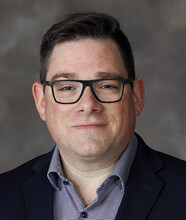Rural Drug Addiction Research Center
Deann Gayman, April 30, 2024
Fewer than one in five Nebraskans know how to access, use naloxone
Access to naloxone — a life-saving medication known by its brand name Narcan — continues to grow across Nebraska through the Stop Overdose Nebraska program, but many of the state’s residents still do not know how to acquire or use it.
Naloxone can quickly reverse an opioid drug overdose by blocking opiate receptors in the brain, and wide access to the medication has saved countless lives. It is estimated by the Centers for Disease Control and Prevention that 80% of drug overdoses occur inside a home. With that in mind, most states have made naloxone available without a prescription through participating pharmacies. Nebraska adopted its law in 2015, and a standing order from the Nebraska Department of Health and Human Services allows Narcan to be purchased from any licensed pharmacist without a prescription.

Researchers at the University of Nebraska–Lincoln’s Rural Drug Addiction Research Center have tracked the knowledge of and access to naloxone in the state, and awareness of the medication is ticking up, but there is still a large knowledge gap.
The latest study, published in Harm Reduction Journal, examined results from the 2022 Nebraska Annual Social Indicators Survey. Overall, about three-quarters of Nebraskans are aware of naloxone and what it does, but only 18% know how to access or use it. When looking only at Nebraskans who know what naloxone is, only 24% knew where to obtain or how to use it.
The researchers, including co-author Patrick Habecker, parsed the data further into several demographics. They found only slight differences in naloxone knowledge between urban and rural residents but found larger gaps in other communities. Having a post-high school degree or some college and an annual income above $100,000 were associated with more naloxone familiarity. On the other hand, higher perceived community stigma toward people who use opioids was significantly associated with a decrease in access and competency.
Surprisingly, knowing someone who had experienced a drug overdose in the last year, knowing someone who uses illicit drugs and self-use of illicit opioids were not associated with increased naloxone knowledge.
“That is a troubling finding,” said Habecker, research assistant professor. “That is a point where we hope broader efforts to increase knowledge and accessibility can angle toward, because in an ideal world, these are folks that we definitely want to have access and knowledge of naloxone.”
The largest knowledge gap among Nebraskans is among those who are and are not familiar with syringe service programs, which are currently illegal in the state. Those who reported familiarity with syringe service programs were 129% more likely to be familiar with naloxone, 153% more likely to know where to access it and 333% more likely to know how to use it.
“I think that might be catching something that is explaining some of the variance we found,” Habecker said. “Whether it is someone who is familiar with harm reduction or pays attention to public policy in the United States, we’re not sure, but it is definitely signaling something worth looking at more closely.”
The researchers also noted that while the naloxone program in Nebraska is growing, with 112 participating pharmacies, the state is behind the rest of the nation. In 2019, Nebraska had the lowest-per-capita pharmacy naloxone dispensing rate of all 50 states.
“Pharmacy deserts exist,” Habecker said. “And sometimes it’s been a paperwork issue, or they just don’t keep it in stock. While we didn’t find significant differences between urban and rural areas, where pharmacy deserts can exist, it’s definitely something to keep our eye on.”





